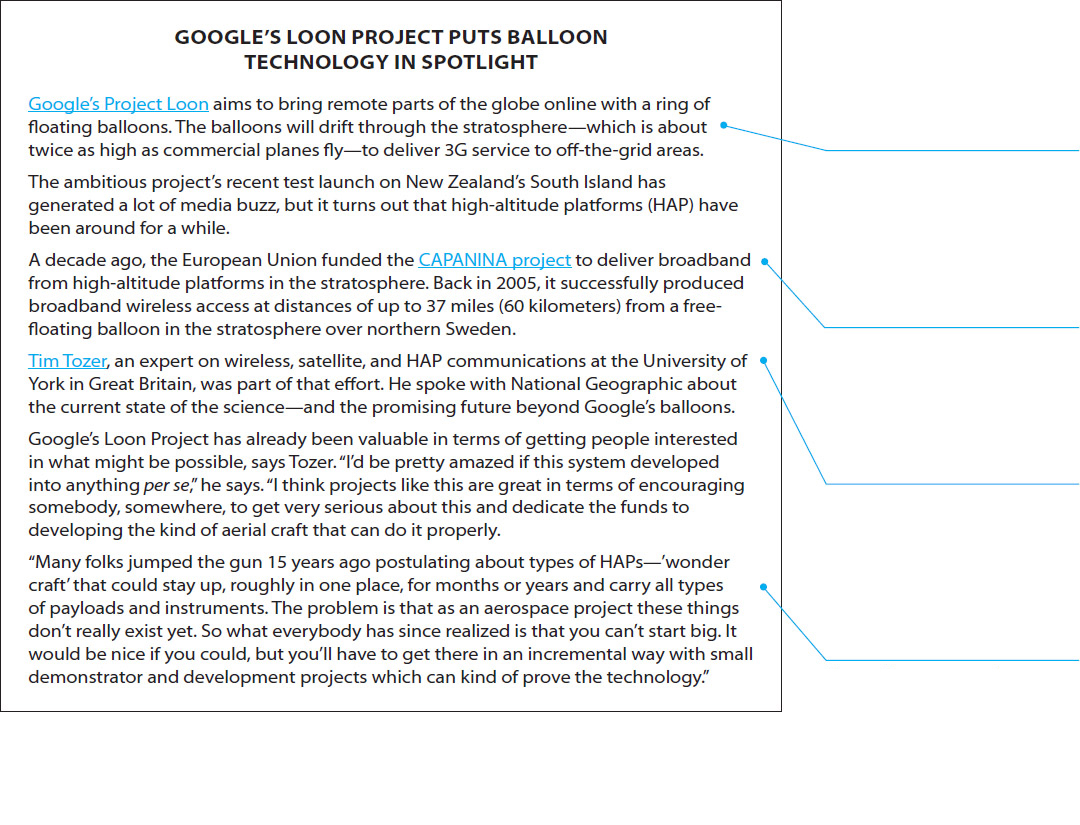Revising Information for a New Audience and Purpose
Printed Page 110-111
Revising Information for a New Audience and Purpose
Chapter 2 introduced the concept of boilerplate information: standard text or graphics that are plugged into various documents published by your organization (see Your Legal Obligations). Often, however, when you write to a new audience or have a new purpose, you need to revise the information.
Figure 5.9 shows an excerpt from a press release by Google (2013) about Project Loon. Figure 5.10 is an excerpt from an article based on the press release.
A press release is a statement distributed by a company to the news media to promote a new development at the company. The company hopes the news media will print the news release, thereby publicizing the development.
The writer sketches in the technical problems.
The writer then announces his belief that his company has solved the problem by looking at it from a new angle. His use of the word moonshot suggests that Google is proud of how ambitious the program is.
The writer refers to previous attempts to use high-altitude platforms and explains why the new approach is different.
The writer describes the role his company hopes the public will play. The tone throughout this press release is that this is an ambitious project to address a problem that we can solve if we all work together.

Figure 5.9 Press Release

Figure 5.10 Article Based on a Press Release
The writer begins with a description of the project, largely based on the information from the Google press release, as well as a link to the press release.
The press release referred briefly to earlier attempts to use HAP. These earlier attempts will be a focus of this article.
The writer introduces Tim Tozer, a HAP pioneer. The writer’s interview with Tozer provides the focus of this article: an outsider’s perspective on Project Loon.
The article presents much more analysis by Tozer. His philosophy of technological progress—that it works best if scientists take small, incremental steps—is very different from that of Google, which prefers to take giant steps.